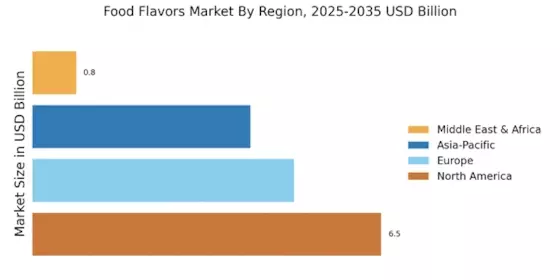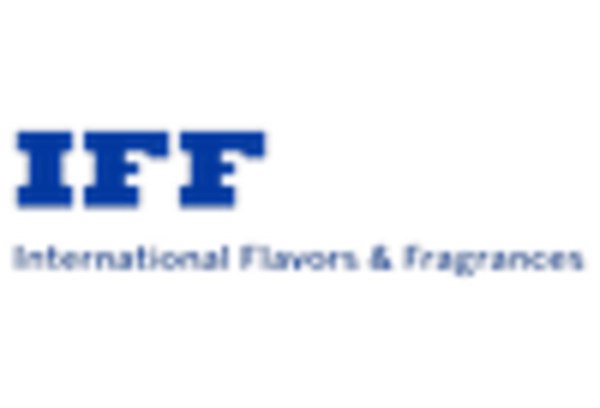Emergence of Ethnic and Exotic Flavors
The Food Flavors Market is increasingly characterized by the emergence of ethnic and exotic flavors. As consumers become more adventurous in their culinary choices, there is a growing demand for flavors that reflect diverse cultural backgrounds. This trend is evident in the rising popularity of international cuisines, which has led to an expansion of flavor offerings that include spices and herbs from various regions. The market for ethnic flavors is projected to grow at a rate of 6% annually, indicating a robust opportunity for flavor manufacturers to diversify their portfolios. By incorporating these unique flavors, companies can enhance their product lines and appeal to a broader audience within the Food Flavors Market, ultimately driving sales and market share.
Increased Focus on Health and Wellness
The Food Flavors Market is witnessing a surge in demand for flavors that cater to health and wellness trends. Consumers are increasingly seeking products that not only taste good but also offer health benefits. This has led to a rise in the popularity of functional flavors, which are infused with ingredients that promote health, such as vitamins, minerals, and probiotics. The market for functional foods is expected to grow at a rate of 8% annually, indicating a robust opportunity for flavor manufacturers to innovate. By aligning their offerings with health trends, companies can enhance their competitive edge within the Food Flavors Market, appealing to a demographic that prioritizes wellness in their dietary choices.
Rising Demand for Clean Label Products
The Food Flavors Market is experiencing a notable shift towards clean label products, driven by consumer preferences for transparency and natural ingredients. As consumers become increasingly health-conscious, they seek products that are free from artificial additives and preservatives. This trend is reflected in the growing sales of clean label food products, which have seen a compound annual growth rate of approximately 7% in recent years. Manufacturers are responding by reformulating their offerings to include natural flavors, thereby enhancing their market appeal. This shift not only aligns with consumer expectations but also positions companies favorably within the Food Flavors Market, as they adapt to the evolving landscape of food production and consumption.
Expansion of the Food and Beverage Sector
The Food Flavors Market is significantly influenced by the expansion of the food and beverage sector. As the global population continues to grow, the demand for diverse food products increases, leading to a heightened need for innovative flavor solutions. The food and beverage sector has been projected to reach a valuation of over 8 trillion dollars by 2025, which directly impacts the flavor industry. Companies are investing in research and development to create unique flavor profiles that cater to various consumer preferences. This expansion not only drives sales within the Food Flavors Market but also encourages collaboration between flavor manufacturers and food producers, fostering innovation and creativity in product development.
Adoption of Innovative Flavor Technologies
The Food Flavors Market is being transformed by the adoption of innovative flavor technologies. Advances in extraction and encapsulation techniques allow for the development of more complex and appealing flavor profiles. Technologies such as microencapsulation enable the delivery of flavors in a controlled manner, enhancing the sensory experience of food products. This innovation is particularly relevant in the context of the growing demand for convenience foods, where flavor integrity is crucial. As manufacturers leverage these technologies, they can create products that stand out in a competitive market. The integration of innovative flavor technologies is likely to drive growth within the Food Flavors Market, as companies strive to meet consumer expectations for quality and taste.


















Leave a Comment